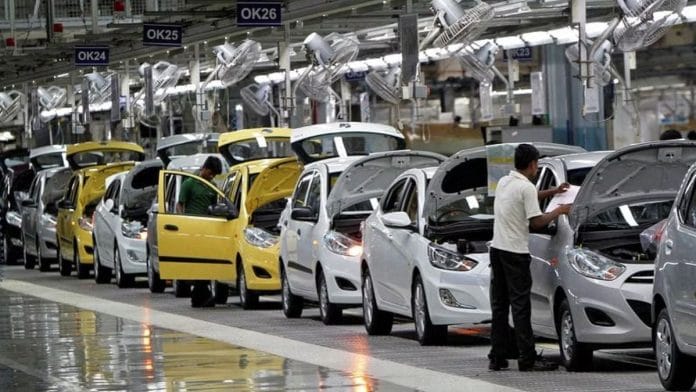The numbers make for sombre reading. According to the Federation of Automotive Dealers Associations, the nodal body for automotive dealers in India, passenger vehicle retail sales in February 2025 were down 10 per cent compared to February 2024—far outweighing the fact that last February had an extra day.
While car company executives would not go on record about the sales decline, many privately admitted to me that the situation was grim. According to FADA’s data, dealer inventory stood at 50-52 days. One carmaker executive half-jokingly remarked that companies might soon need to build “two-storey parking lots” to store cars. However, this level is lower than at the start of the festive season when FADA estimated inventory levels at over 70 days, with a value of Rs 70,000 crore.
Discounts are rampant—it has never been a better time to buy a car. Even models that previously never offered discounts are now seeing hefty price cuts. This shift is evident in how Mahindra has grabbed the second spot in the sales rankings, overtaking Hyundai and Tata Motors in one fell swoop. Mahindra has been buoyed by the success of the new Thar Roxx, and as deliveries of its new electric SUVs, the BE6 and XEV9e, begin, the company may consolidate its lead. Manufacturers are now realigning production, and in the coming months, there is likely to be a decline in production across the board as they and dealers work to clear excess inventory.
However, while Mahindra benefits, industry insiders tell me that things will get worse before they improve. “There is a clear trend of downsizing in the market—buyers are choosing smaller vehicles, and there is renewed interest in used cars,” a senior executive at an automotive company said. The recent correction in the equity markets has also punctured consumer confidence. “While such corrections are cyclical, they tend to hammer confidence,” the executive added.
Yet, the stark irony of the Indian automotive industry was on display at the Raffles, Udaipur, where Mercedes-Benz launched its most expensive vehicle ever in India—the Mercedes-Maybach SL 680 Monogram Edition—priced at an eye-watering Rs 4.2 crore. Only three of these cars will arrive in India later this year, and all are already spoken for. However, in a conversation with Santosh Iyer, managing director of Mercedes-Benz India, it became clear that the company is still eyeing growth, expecting record sales in 2025.
Also read: Indian car dealers worry about deeper discounts amid sales slump
Automakers want policy stability
Iyer also said there is a need for greater policy consistency. “Buyers are confused. You have these ownership norms that punish old car owners, and sudden flip-flops on taxation—like Maharashtra’s new budget proposal for a 6 per cent road tax on electric vehicles priced above Rs 30 lakh. This is certainly bound to impact EV sales in the state, even as the government wants to promote zero-emission vehicles.”
Industry insiders want the government to lay out a clear automotive policy roadmap for the next few years. “Not only will that help us plan better, but it will also give consumers a better insight into the future. Even if it means the government telling the industry that we do not want you to make diesel vehicles going forward,” an industry leader said. He cited China as an example, where the automotive industry and the government worked together to push the transition to ‘New Energy Vehicles’ (NEVs), though he noted that some policy direction is now emerging from the Prime Minister’s Office.
Regardless of policy direction, multiple carmaker executives hinted at a strong desire for a major interest rate cut. “Inflation is under control, and current trade winds, thanks to the US, means that we have to boost local consumption. And there is nothing like a rate cut,” another executive said. But will that happen? And even if it does, will it be enough to prevent what is clearly a cyclical slowdown?
Since the last signs of a slowdown before Covid, the Indian automotive industry has grown from under 2.5 million vehicles in 2019-20 to an expected 4.5 million in 2024-25. A couple of months of slower sales to catch its breath before renewed growth might not be such a bad thing.
@kushanmitra is an automotive journalist based in New Delhi. Views are personal.
(Edited by Prashant)






